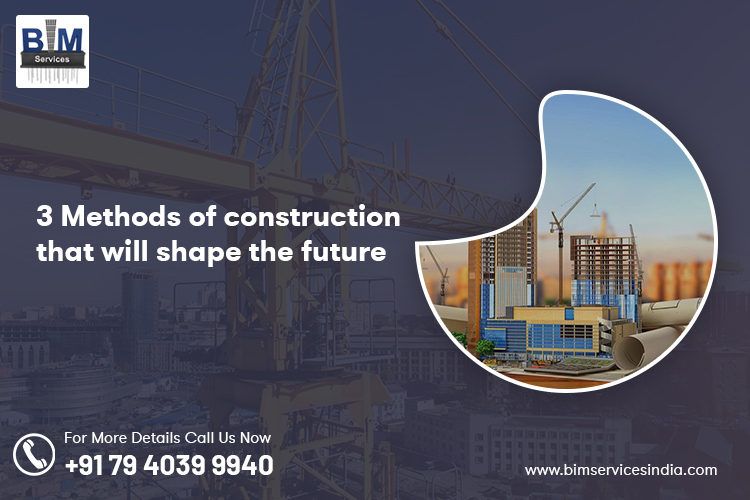3 Methods of Construction that will shape the future

The construction industry in the past two decades has been in a process of experiencing a significant facelift. It is harnessing innovative technologies in order to improve its quality and to ensure that it is able to meet its demand. The new methods have helped the construction professionals deal with recurrent problems like ineffective communication, onsite clashes, scheduling errors etc. Moving away from traditional methods of construction has allowed AEC firms to optimize their resources, enhance their monetary gains, mitigate risks, increase the safety of onsite workers etc.
This post states the 3 types of construction methods which have the potential to redefine the way buildings, structures and infrastructure will be constructed in the future.
Table of Contents
Virtual Construction
Virtual Construction lies at the core of digital transformation taking place in the Architecture, Engineering and Construction industry. Building Information Modeling is a holistic process that involves the creation and management of information of a built asset. It is an intelligent 3D model that contains all the requisite information of the building or the structure. It’s enabled by cloud platform and has augmented the collaboration capabilities of all the stakeholders irrespective of geographical location. It also allows to detect any collisions that would occur in a federated model. BIM Coordination Services not just improves the quality but also enhances productivity and profitability.
Virtual Construction is not just beneficial during the designing and planning stage but its benefits carry on to construction and maintenance of the facility. It allows to digitize the construction site, links time and cost related information leading to proper decisions. 2D construction documents extracted from the BIM model also provide the onsite workers all the information they need to properly carry out their tasks. Finally, once the construction is over, Scan to BIM Services and Facility Management also makes it possible to carry out effective renovations and maintenance activities.
Modular Construction
There is a strong trend being observed in the construction sector of building away from the construction site. A part of that is due to the increasing cramped building sites and the other is due to the advancements taking place in the technology making offsite construction possible. Modular construction is not really a novel concept but it has gained prominence in the recent times. It is a method where the building or its parts are constructed off site and in a factory controlled location using similar materials and codes that would be used in a conventionally built facility. They are then brought onsite to be assembled and installed.
There are various reasons why modular construction is currently gaining prominence. It could be the increased pressure on the AEC industry to build more, the constantly rising awareness about the environment or even the dearth of skilled labour. Nevertheless, Modular construction has been valuable to the construction industry by reducing time taken to construction, lowering the amount of waste, eliminating weather delays and so on.
3D Printing
The final and perhaps the most recent method of construction that has the potential to transform the construction sector is that of 3D printing. 3D printing had already been touted as revolution in manufacturing sector but it was only in 2004 that it was first used in the construction sector. There are different methods of 3D printing in construction like using a Robotic Arm Extruder or using WAAM (Wire Arc Additive Manufacturing) which prints 3D metal structures via a 6 axis robot.
3D Printing today can construct a house in less than 20 hours. The gains are again enormous with time and cost benefits topping the list. It also allows the use of novel hybrid construction materials, almost creates no waste and can also be used to create unique designs more easily. That being said 3D printing is still in its infancy stage and a lot of research is being done but for sure the next few years will see it become more prominent.
The success of modular construction and 3D printing today greatly depends on BIM. The intelligent 3D modeling process provides accurate data and information about the size, dimensions etc. of the components that would either be 3D printed or pre-fabricated. 3D modeling ensures the success of both prefabrication and 3D printing.
Conclusion:
The current decade is surely going to see the construction sector deal with unique problems that it has perhaps never faced before. But one thing is for sure that the above three methods of construction are going play a crucial role in the way the sector builds, maintains, renovates and even demolishes them.